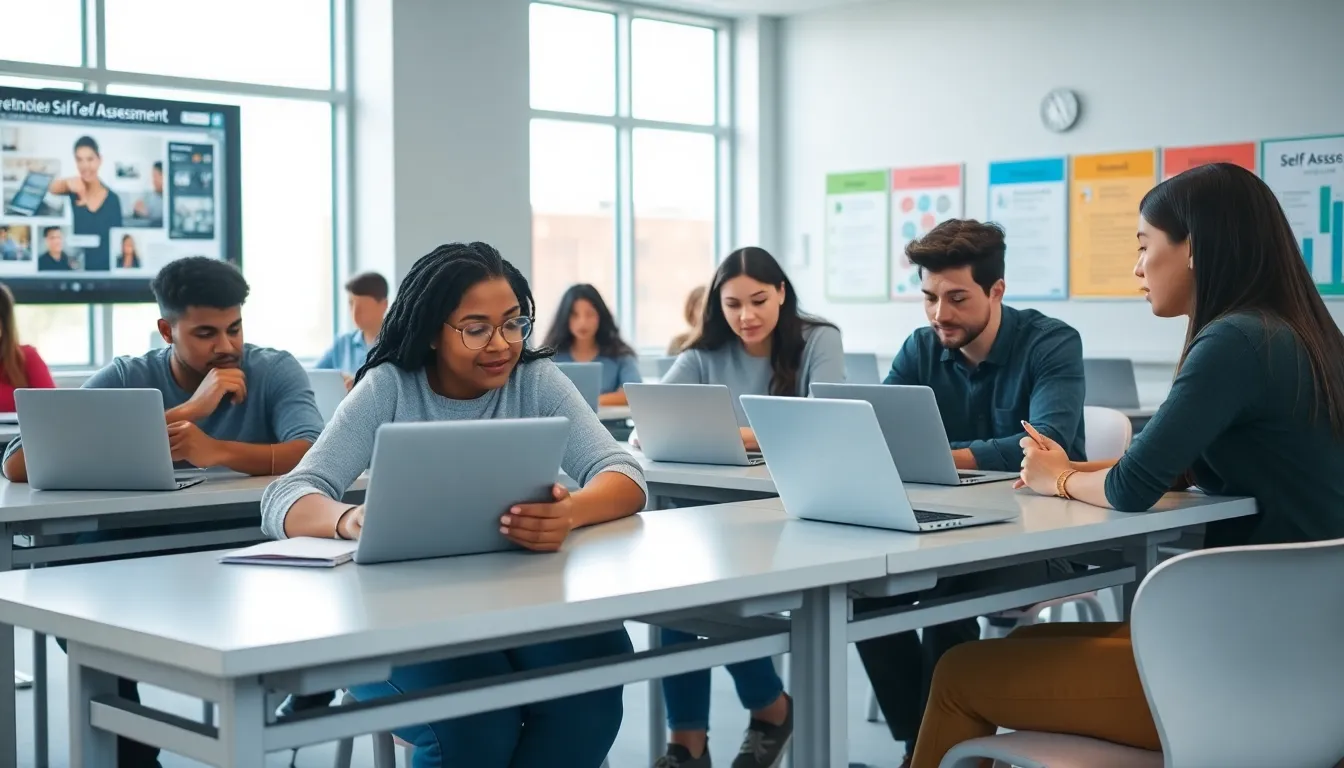Imagine a classroom where students aren’t just passive recipients of knowledge but active architects of their own learning journeys. Sounds a bit like a fairy tale, right? Well, with student self-assessment, that dream can become a reality. This innovative approach does more than just tick boxes on a report card: it empowers students to reflect on their progress, recognize their strengths and weaknesses, and take charge of their educational path, all while keeping them engaged and motivated. In this text, we’ll jump into the ins and outs of student self-assessment, equipping educators with the knowledge they need to foster a culture of self-improvement. Let’s jump in.
Student Self Assessment

Student self-assessment is the process where learners evaluate their own academic performance and understanding of content. Think of it as a mirror reflecting their growth and challenges. This practice encourages students to look deeply at what they’ve learned, how they’ve learned it, and where they may need to improve. Besides, it’s not merely about grading oneself: it’s a skill that promotes critical thinking and self-awareness. By engaging in self-assessment, students gain valuable insights into their learning processes, which can lead to more meaningful educational experiences.
Benefits of Student Self Assessment
The advantages of student self-assessment are plentiful. First, it cultivates a sense of ownership in students. When they take responsibility for their learning, they are more likely to engage with the material and strive for improvement. Second, self-assessment aids in developing critical thinking skills. Students learn to analyze their performance and identify specific areas that need attention. Also, it fosters goal setting, as they can set realistic and achievable targets based on their evaluations. Eventually, these benefits culminate in increased motivation and enhanced academic outcomes.
Methods of Student Self Assessment
When it comes to methods, teachers have a variety of tools at their disposal. Portfolios are one popular option: they allow students to showcase their best work and reflect on their progress over time. Rubrics are another effective tool, providing clear expectations that students can use to evaluate their performance against specific criteria. Peer assessments also encourage collaboration, letting students give and receive constructive feedback from their classmates. Finally, self-reflection journals can offer students a private space to articulate their thoughts and feelings about their learning journey.
Implementing Student Self Assessment in the Classroom
To successfully integrate self-assessment in the classroom, educators can start with small steps. Initially, provide students with clear guidelines and structured tools to aid their evaluations. Introducing self-assessment as part of a larger assessment strategy can ease students into the practice. Incorporating discussions around self-assessment during class can also demystify the process. Allowing students to share their experiences fosters a collaborative environment. As students become more comfortable with self-assessment, educators can gradually encourage them to take more ownership, shaping the initiative to fit the unique dynamics of their classroom.
Challenges of Student Self Assessment
Even though its numerous benefits, implementing student self-assessment isn’t without its challenges. One significant hurdle is the initial resistance students might feel. Many are accustomed to traditional grading systems and may struggle with evaluating themselves honestly. Also, educators face the challenging job of ensuring the assessments align with educational standards. Finding the balance between guidance and autonomy can also be tricky. Teachers must provide enough structure to ensure self-assessments are meaningful while allowing students the freedom to think critically about their own learning.
Best Practices for Effective Student Self Assessment
To enhance the effectiveness of student self-assessment, several best practices can be adopted. First, clarity is key: students should understand the goals and criteria of self-assessment from the start. Incorporating regular training sessions can demystify the process and equip them with the necessary skills to self-evaluate effectively. Feedback plays a critical role: frequent check-ins can help guide students, reinforcing the idea that self-assessment is a journey, not a destination. Finally, integrating technology can make self-assessment more dynamic, students can use online tools to track their progress, making the whole experience more interactive.

